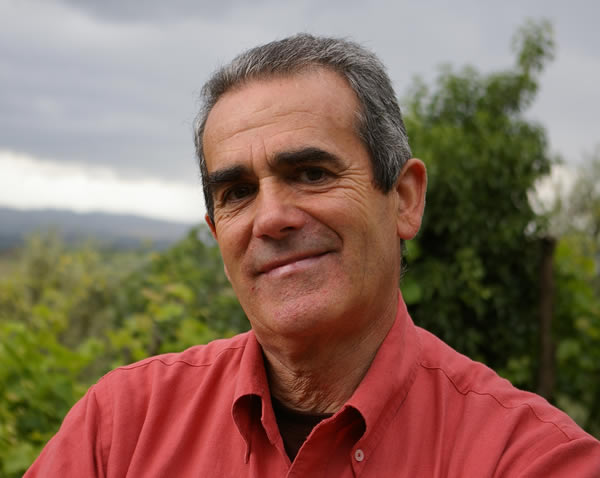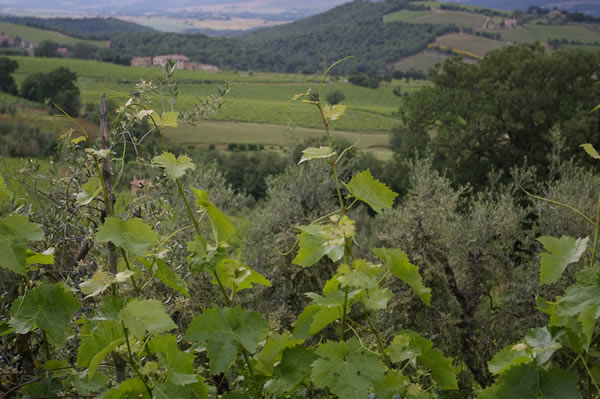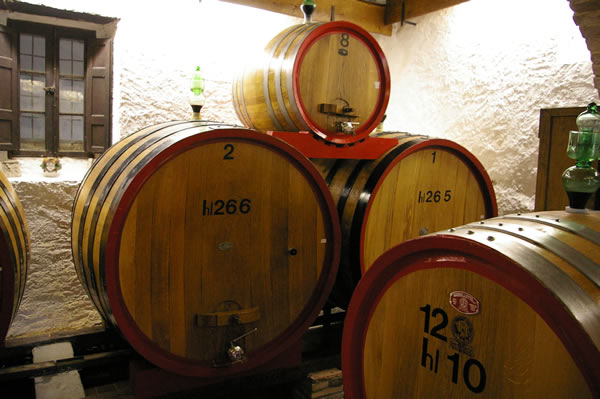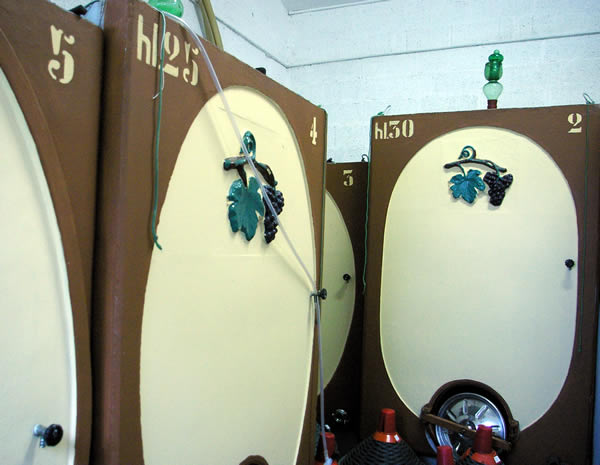|
The
wines of Il Paradiso di Manfredi, Montalcino,
Tuscany
Via Canalicchio 305, 53024 Montalcino (SI)
Website: www.ilparadisodimanfredi.com

Florio
Guerrini of Il Paradiso
We
all need holidays, and in June 2008 Fiona and I took a short break to
Southern Tuscany, where we stayed in a beautiful country hotel in
Montepulciano, without the children - paradise! But even though it was
a holiday, I couldnít resist doing at least one vineyard visit, and
so with the help of some contacts I got an appointment to visit Il
Paradiso di Manfredi, a small, traditional Brunello producer making
some of the very best Brunellos around.
Brunello
is a relatively new DOC with vineyards clustered around the beautiful
hilltop town of Montalcino. Until the 1950s the only producer here was
Biondi Santi. By the time the DOC was awarded in 1966, there were
still only 12 (today there are around 250). Il Paradiso di Manfredi
takes its name from Manfredi Martini who worked for Biondi Santi in
the 1950s, and then purchased Il Paradiso in 1958. When a big freeze
destroyed the olive trees on this estate in the 1960s, he decided to
turn to winegrowing.
Manfredi
died in 1982 and his son-in-law, Florio Guerrini, who had previously
been a maths teacher, took over (Florioís first vintage was actually
1981). He lives on the small estate with his wife Rossella (Manfrediís
daughter), and we invaded their home to try their wines and have a
look at the winery (adjoining the house) and vineyards.

It
was a really interesting visit, despite the fact that Fiona and I
speak no Italian, and Florio and Rossella speak no English!
They were such lovely, welcoming people this didn't seem to be too
much of a problem, and Florio spoke slowly and my 'O' level Latin made
some of it understandable.
The
estate is nestled on the side of the hill on which Montalcino is
perched. Itís a compact, 3 hectare estate with 2.5 hectares of
vines, of which 2 ha produce Brunello. All the vines are Sangiovese
Grosso, and they are planted in three blocks, one going down the
slope, one near the house and one over the road at the back. Vine
spacing is 0.9 ◊ 2.7 m, with 3300 vines/hectare. Average vine age is
28 years.
Vineyard
management is traditional, natural management with no herbicides or
fertilizers. I ask (this was actually complicated because of the
language barrier) Florio about biodynamics (this estate is often
described as biodynamic) and his response is that this philosophy is
older than biodynamics.

In
the winery things are pretty traditional. The first room has
cement-lined tanks which are lined with resin. These are great for
temperature control during fermentation, which is achieved with wild
yeasts. There are a range of sizes: 3000, 5000, 20 000 and 25 000
litres. Then thereís a second room with large Slavonian oak botte
(big barrels). To get the wines from the fermentation tanks to the botte, a window opens between the two rooms and a hose is put
through it: the transfer is by gravity. The large oak allows a slow
microoxygenation, and the Brunellos remain in these barrels for at
least three years, sometimes longer (36Ė40 months for the Brunello;
48Ė54 months for the Riserva Ė in contrast, the Rosso is 14+
months). All the bottling is done on the estate, and the wine goes to
bottle without ever having been pumped.

Just
a little sulfur dioxide is used at bottling. The corks used here come
from Sardinia and cost more than 1 Euro each. 7000 bottles of Brunello
are made each year. Florio says heís careful who he sells these two,
because heís quite keen to get the younger generation into
traditional Brunellos and so heís trying to spread the message with
his wines.
We
tried two wines: the Rosso was sold out (so Iíve added a recent note
of this from tasting it at home), and the two vintages on offer were
2002 and 2003. Both were problematic in the region in general, but
Florio was lucky in that he picked his 2002 just eight hours before
the torrential rain that spoiled the vintage for most people. He says
his wine is typical of the year and reflects the vintage character.
Florio thinks 2003 is a good year, but says that this wine is too
young, and will be better the day after itís opened.
Il
Paradiso di Manfredi Brunello di Montalcino 2003
Lovely pure, aromatic, earthy nose is smooth and perfumed with
lovely elegance. It has a beautifully sweet woody, foresty, earthy
perfume. The palate is concentrated and smooth with a lovely spicy
complexity. Thereís just a lot going on here: itís really elegant
with warmth, spicy tannins and a beguiling earthy character. Like many
serious wines, itís changing in the glass. Itís concentrated,
minerally and spicy with real purity. 96/100
Il
Paradiso di Manfredi Brunello di Montalcino 2002
Deep, perfumed nose is earthy and very spicy, with a warm,
enticing spiciness. It still has that same elegance and purity, but
with a touch more edginess. The palate is smooth, pure and quite
structured with a lovely spicy, earthy focus, and a real sense of life
to it. Itís another wine that shifts as you taste it, and has a long
future ahead of it. 95/100
(Both
wines available from Les Caves de Pyrene in the UK)
older
note:
Il Paradiso di Manfredi 2005
Rosso di Montalcino, Italy
From a small estate
that practices many biodynamic principles, this Sangiovese is
thrillingly alive and elegant. The aromatic nose shows dark cherries
with purity and freshness allied with a bit of earthiness. The
palate is quite complex with some earthy spiciness undeneath the
sweet, pure dark cherry and blackberry fruit. There's a lovely
smooth, elegant texture here, that's somewhere between silk and
velvet. There's also a hint of forest floor. Finishes quite savoury.
A supremely drinkable wine that's hard to resist. It tastes really
natural (in a good way). 91/100 (Les Caves de Pyrene) 01/08
Wines tasted 06/08
Find
these wines with wine-searcher.com
Back to top
|

